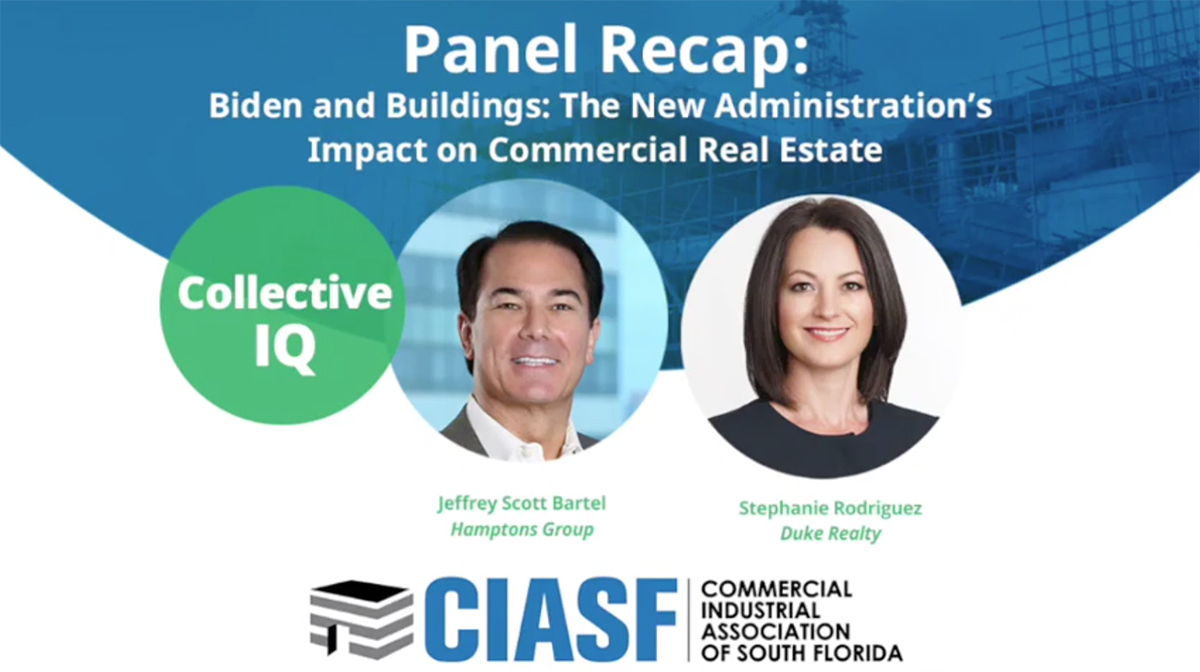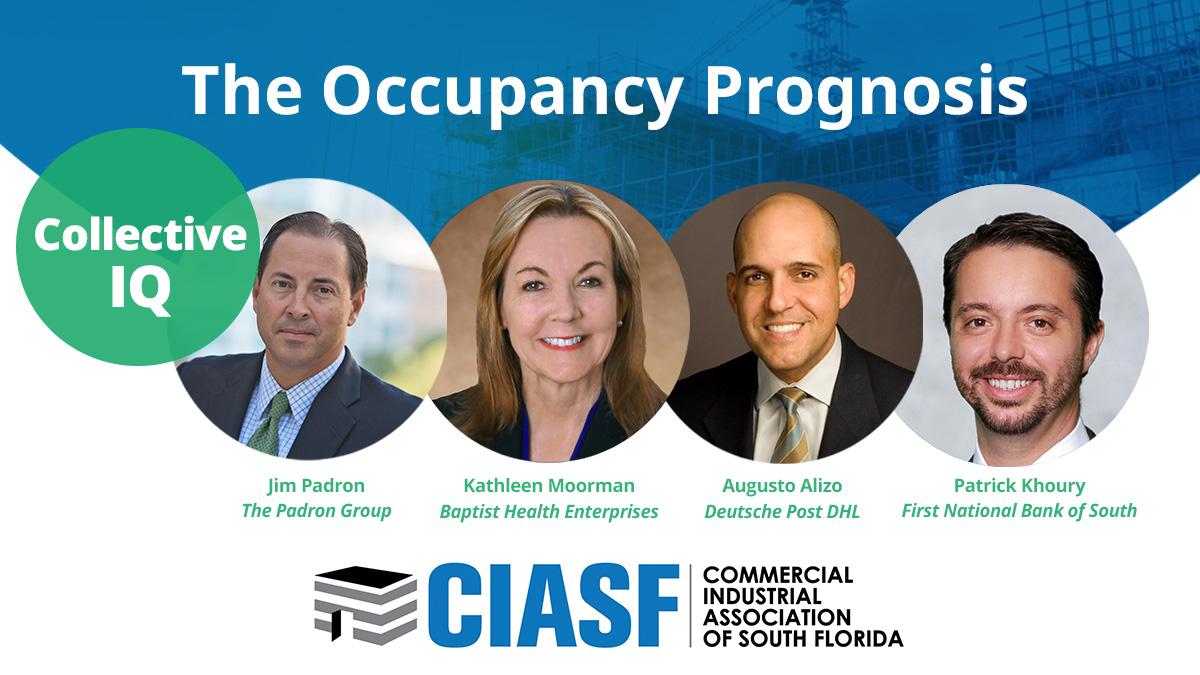CIASF thanks Miller Construction for sponsoring CIASF’s August 20 panel discussion focusing on trends in industrial construction and development. Miller Construction has been a fixture in South Florida for 47 years. Most of the company’s clients are in the industrial and commercial area. In April, Miller Construction moved into new offices at 5750 Powerline Road in Fort Lauderdale.
Participants:
Moderator: David Blount, Vice President of Development & Investment, Foundry Commercial
Ford Gibson, Managing Director, Development & Investments, Foundry Commercial
Michael Gomez, President, Terracon
Brian Sudduth, President, Miller Construction Company
Highlights
Supply chain challenge: Long-lead planning has never been more important. Builders are procuring and storing long-lead supplies, equipment and products to keep construction deliverables flowing. Projects have in some cases experienced delays of three to four weeks due to factory shutdowns earlier in the pandemic and quarantined ships. A shortage to monitor is with light fixtures, most of which are produced in China. We have seen a lot of materials imported from China become scarce.
Development deals: Investment dollars are hard to come by for new development in industrial and near impossible to find for new office space. Investors seem unwilling to take a chance when they don’t know what’s coming and are looking for guarantees. Issues are the same for existing product even in the strong South Florida market.
Staying safe: Construction has developed COVID-19 protocols and sites are mastering the complexities of keeping workers safe and overcoming challenges to meet schedules. Essential personal protection equipment is available, unlike in the early days of the pandemic. All employees must show a clean bill of health before the start of the work day, wear masks at all times and keep socially distant. COVID-19 interferes whenever a crew member is exposed and goes into quarantine.
Labor market: Holding steady. No exodus like the 2008 recession, when workers left construction altogether after jobs dried up. Subcontractors have generally not dropped employees.
Permitting and inspections: Any jobs in permitting six months ago are just moving forward. The permitting process is still “learn as you go” with every city’s requirements varying during COVID-19. Inspections are case-by-case, city-by-city with online, hybrid and third-party inspections becoming common.
Building Costs: Overall, costs have dropped since February. Raw materials and concrete are holding. Copper is up. Lumber is up. Steel price is the same as in February. The price of raw materials that go into concrete are holding. There’s optimism that prices will stay steady, and uncertainty as to how long this will hold before the commodity market drops.
Correction coming: There will be a short correction, with new construction prices coming down a little bit and companies taking smaller projects than usual just to maintain their workforce. Preconstruction was slowest in May and June because of uncertainty but is beginning to ramp up. Projects outside the industrial sector are being scaled back, for example, going down to two stories from four stories as uncertainty continues. If the cost was at $15 million, now the push is to get it to $10 million.
Winners-Losers: Industrial is the darling asset class going into 2021 and e-commerce warehouses are winners. Land and money are scarce for new development. Fewer opportunities are present outside the industrial sector, with most office projects at a standstill until it’s clear how things will change. Cities with inland ports are doing well. Other developing nations are becoming a new, replacement source for materials over China for future imports.






















